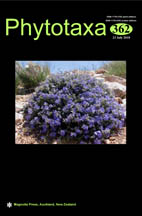Abstract
Charophytes are commonly easily recognizable plants irrespective of their size due to the recurrent combination of very similar parts within their thalli. A few species are outstanding due to their unusual whip-like appearance with regularly distributed small nodules on the stems formed with whorls of short and nearly rudimentary branchlets. The central and north-European Chara filiformis A. Braun in Hertzsch (1855: 81) and mainly Middle-Asian C. kirghisorum Lessing (1834: 212) are examples of this distinctive habit. The species differ essentially in gametangia arrangement as well as in their distribution range. Monoecious C. filiformis does not have reliable records east of Pskov Oblast of Russia (29° E), while dioecious C. kirghisorum is unknown west of Orenburg Oblast of Russia (58° E) (Hollerbach 1941; Hollerbach & Krassavina 1983; LE!, PSK!). Therefore, they may be recognized as vicariate species.

